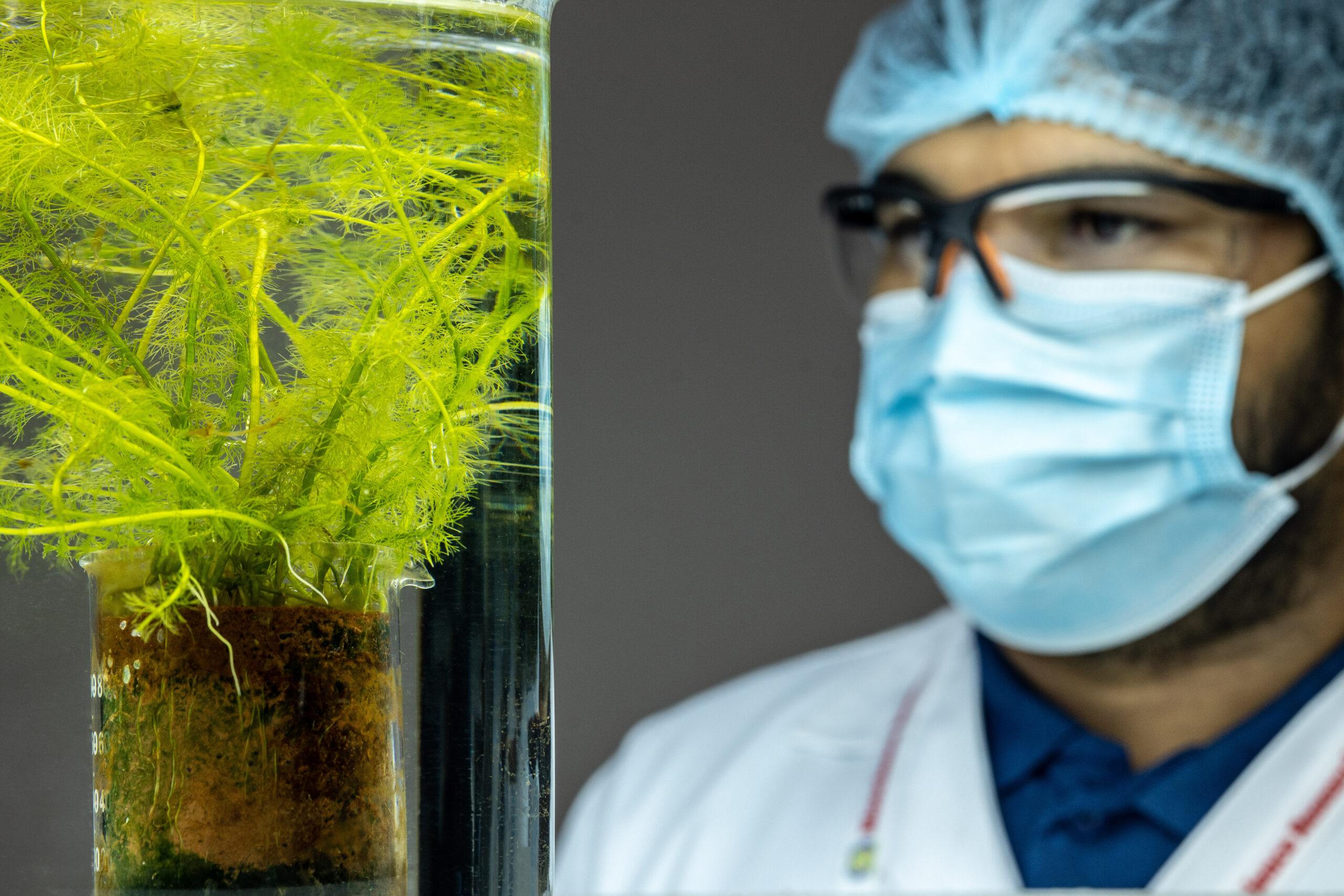Ecotoxicology
Comprehensive Ecotoxicology Testing Services
Bioscience Research Foundation (BRF) boasts India’s largest Ecotoxicology department, specializing in comprehensive testing services for the agrochemical, and biological industries. With expertise covering 26 species, including birds, fish, algae, and plants, we assess compound toxicity across diverse ecosystems.
Our commitment to delivering reliable and accurate results is paramount. Experienced scientists leverage state-of-the-art equipment such as Plant growth chambers, Cold rooms, Flow through systems, Micro-applicators, to conduct Ecotoxicology studies. We offer acute and chronic toxicity testing for pharmaceuticals, agrochemicals, and environmental samples, including aquatic toxicity testing using a flow-through system for precise results.
In addition to standard services, our department provides customized tests, including bioaccumulation studies, toxicity assessments for honeybees and earthworms, and soil microorganism toxicity tests. With extensive experience in eco-toxicological risk assessments, we’ve contributed to groundbreaking projects like registering India’s first nano-fertilizer.
BRF’s dedication to quality is evident in our in-house cultures of honeybees, earthworms, and other organisms, enabling swift and accurate testing. Our reports, accepted by regulatory agencies worldwide, adhere to Good Laboratory Practice (GLP) and National Accreditation Board for Testing and Calibration Laboratories (NABL) standards.
Partner with BRF’s Ecotoxicology department to access reliable testing services and expertise that support research and development initiatives. Contact us today to learn more about how we can address your specific needs.
Our Lab
Overview of services
- Fish acute toxicity (e.g., OECD 203)
- Daphnia acute and chronic toxicity (e.g., OECD 202, OECD 211)
- Algal growth inhibition (e.g., OECD 201)
- Microtox (bacterial bioluminescence inhibition)
- Ichthyo Toxicity
- Aquatic plant toxicity
- Crustacean acute and chronic toxicity
- Aquatic macroinvertebrate acute and chronic toxicity
- Amphibian toxicity
- Sediment toxicity using benthic organisms
- Mysid shrimp toxicity
- Marine and freshwater mollusk toxicity
- Earthworm acute and chronic toxicity (e.g., OECD 207, OECD 222)
- Soil microorganism toxicity
- Plant seedling and growth (e.g., OECD 208, OECD 227)
- Honeybee toxicity (e.g., OECD 213)
- Pollinator attractant/repellent
- Avian acute oral toxicity
- Seedling emergence and growth on terrestrial plants
- Soil invertebrate toxicity (e.g., earthworms, collembolans)
- Pollinator toxicity (e.g., bees, butterflies)
- Beneficial insect toxicity (e.g., ladybugs, lacewings)
- Earthworm avoidance
- Freshwater sediment toxicity (e.g., OECD 218, ASTM E1706)
- Marine sediment toxicity (e.g., ASTM E1367, EPA Method 600/R-99/064)
- Benthic invertebrate toxicity
- Oligochaete toxicity
- Chironomid toxicity
- Sediment pore water toxicity
- Bioaccumulation and Biomagnification:
- Bioconcentration factor (BCF) studies
- Bioaccumulation in fish (e.g., OECD 305)
- Tissue residue analysis
- Trophic transfer studies
- Bioaccumulation in invertebrates (e.g., mussels, snails)
- Bioaccumulation in plants
- Biomagnification in food chains
- Trophic level feeding studies
- Aerobic and anaerobic biodegradation (e.g., OECD 301, OECD 314)
- Soil degradation studies (e.g., OECD 307)
- Hydrolysis studies
- Photodegradation studies
- Adsorption/desorption studies (e.g., OECD 106, OECD 121)
- Volatilization studies
- Soil leaching and runoff studies
- Dissipation studies in different soil types
- Transformation product identification and characterization
- Mobility and persistence studies in water and soil
- Species sensitivity distribution analysis
- Environmental risk assessment modeling
- Sediment quality assessment
- Field monitoring and ecotoxicological surveys
- Ecological exposure studies
- Ecotoxicological studies on non-target organisms
- Wildlife toxicity (e.g., small mammals, reptiles)
- Microbial toxicity (e.g., bacteria, fungi)
- Terrestrial plant toxicity
- Aquatic plant community studies
- Soil microbial community studies
- Multi-species toxicity


